Don’t let your home movies stay trapped. Jens Peterson of Everpresent is back to help us navigate the world of standard and rare video formats.

It’s good to be back on the APPO blog to focus on video formats! Home movies can be more dynamic than still photos, so they’re a fun way for you and your clients to relive the moments they capture.
Read Jens’ Rare Format Slide Guide too.
The term ‘home movies’ probably makes you think of VHS tapes or 8mm film reels, but there’s a huge range of video formats beyond that. Learn how to tell them apart can help you sort, preserve, and enjoy these items again.
Video Formats You See the Most
Home movies started on celluloid film rolls that capture pictures when exposed to light. Perforations called sprocket holes allow the film to be fed through projectors. It has a grainy effect that some people prefer to crystal-clear video. Chemicals in the film can make it deteriorate, however, especially in direct sunlight and high temperatures. It’s also vulnerable to mold and a smelly type of breakdown called ‘vinegar syndrome.’
The standard 8mm format was the most common for homemade films. These are mostly silent, but some film has a thin metal strip along one edge to store audio. When you think about rare film formats, it helps to know how they differ from the 8mm standard. Here are the formats you should know.
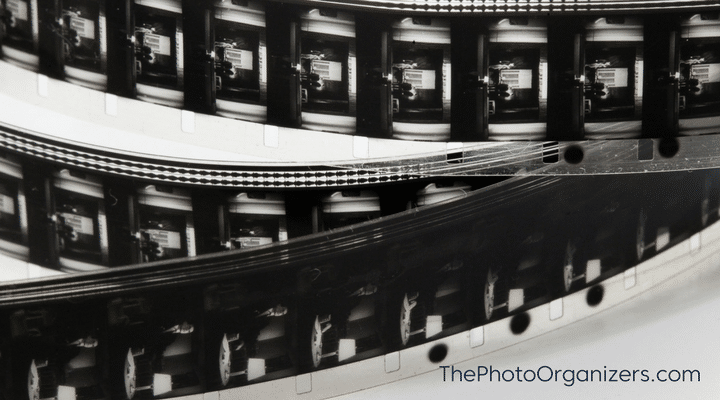
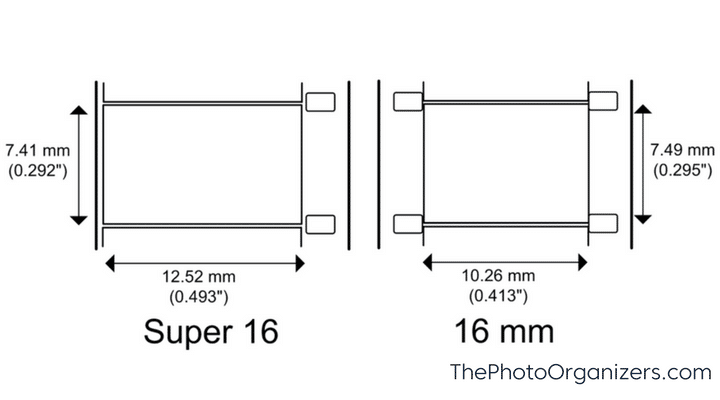
16mm
- Introduced: 1923 by Eastman Kodak
- Capacity: Usually 50 feet long with up to two minutes of playback
- Variations: Super 16 format
The 16mm format came as a cheaper, consumer-friendly alternative to the 35mm gauge used by professionals. It used safety film, which was less flammable than the nitrate film that once ruled the film industry. 16mm film was also more affordable to develop. A variation called the Super 16 allows for a larger image because the sprocket holes are left off of one side.
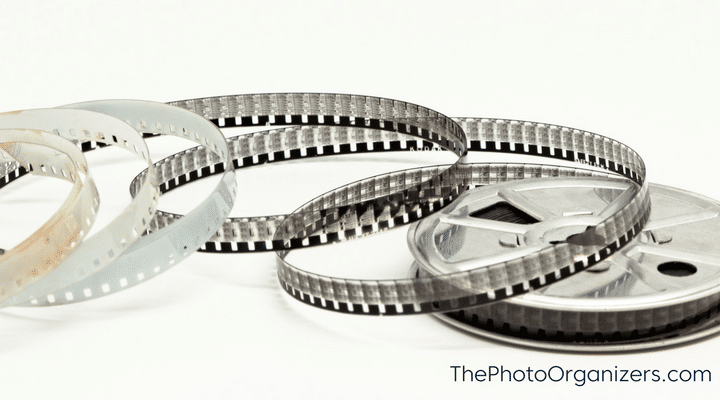
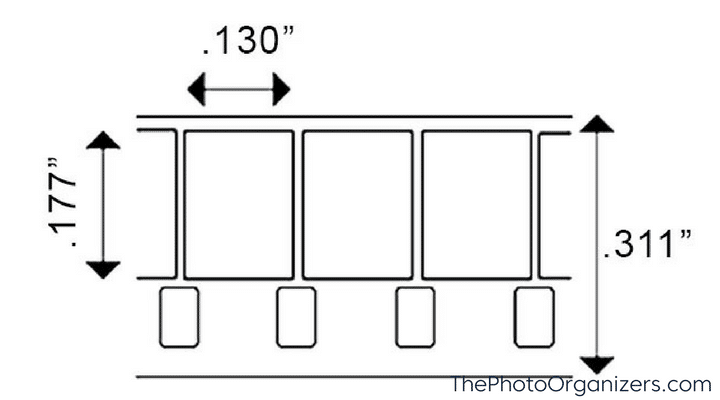
Standard 8mm
- Introduced: 1932 by Kodak
- Capacity: Mostly 25-foot reels with three to four minutes of playback at 16 frames per second
Standard 8mm film was a more affordable, popular alternative to the 16mm norm. It’s sometimes called ‘Double8,’ because it’s really just 16mm film with a separate recording on each half. This two-sided split means the normal 25-foot length can actually hold 50 feet of video. Standard 8mm film was mostly discontinued in the 1990s. Visit this page to learn more about standard 8mm film.
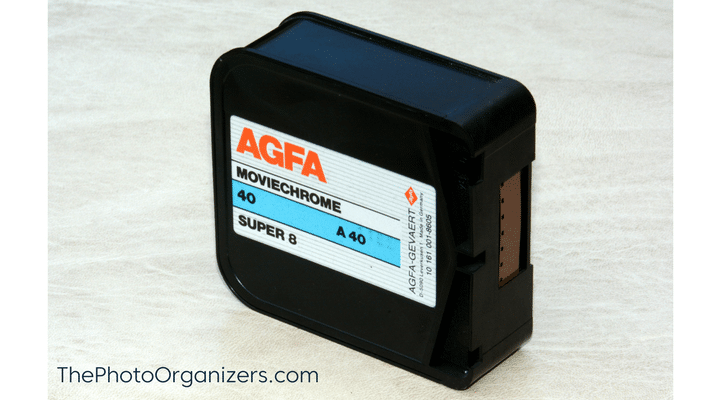
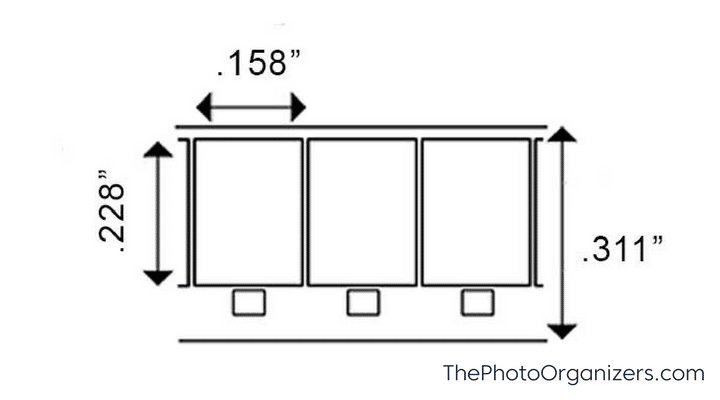
Super8
- Introduced: 1965 by Kodak
- Capacity: 50 feet of film for about 3 minutes of playback at 18 frames per second
Super8 film comes in cartridges that are easy to load into cameras. Just like the Super 16 format, the Super8 has smaller sprocket holes than the standard 8mm. The extra space allows a larger image size and a magnetic audio strip. It was a popular home video medium until roughly 1980. Some commercial films were also sold on this format. Get more fun facts about Super8 film by clicking here.
[bctt tweet=”Not sure what kind of film your home movies are in? Check out this ultimate guide. @everpresent_inc” username=”photoorganizers”]
Rare Film Formats
35mm Film
- Introduced: 1892 by Thomas Edison and William Dickson
- Capacity: Normal length is 1000 feet with about 11 minutes of standard playback speed
35mm film was created for Thomas Edison’s motion picture camera. The format became the international standard for film in 1909. It was popular with filmmakers, but the developing process was too costly for most families. The film was first made with a flammable chemical that would catch fire if handled improperly. Combustible nitrate film was phased out in the 1950s.
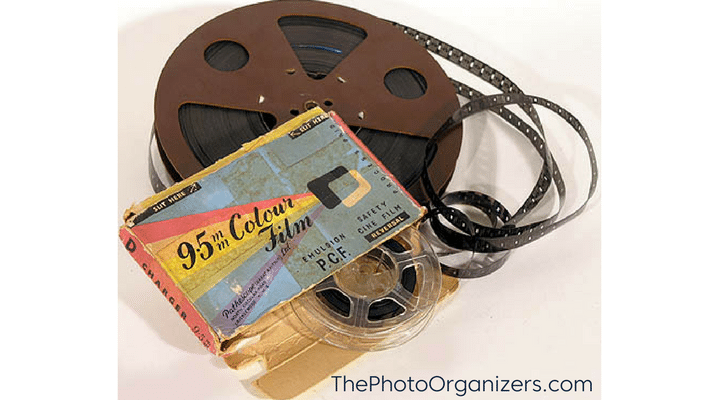
9.5mm
- Introduced: 1922 by Pathé Frères
- Capacity: Usually 30 feet long
The 9.5mm format was designed to copy commercial films for personal use. It’s recorded as three separate runs of film on a single 35mm film loop. 9.5mm recordings were highly popular in Europe, but not so much in the United States.
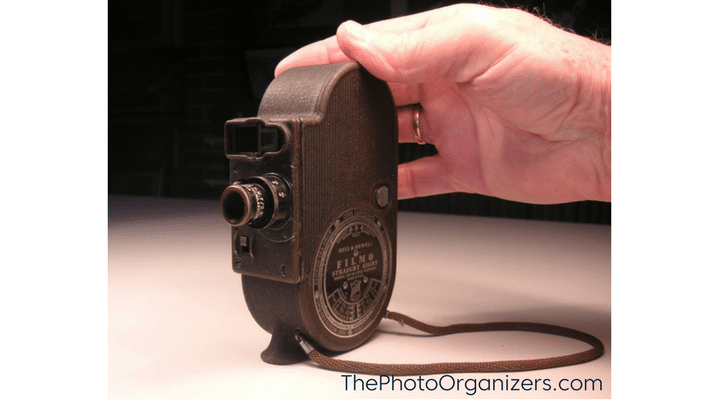
Single-Width 8mm/Straight Eight
- Introduced: 1935 by Bell & Howell
- Competitor: standard 8mm
Single-width 8mm film was first released with a Bell & Howell camera called the Filmo Straight Eight. This format is actually 8mm wide, unlike the standard 8mm or ‘Double8’ format that comes on two sides of 16mm film. Straight Eight film was not as popular as the standard 8mm, but it did return as a cartridge format in the 1950s for the Bolsey 8 camera.
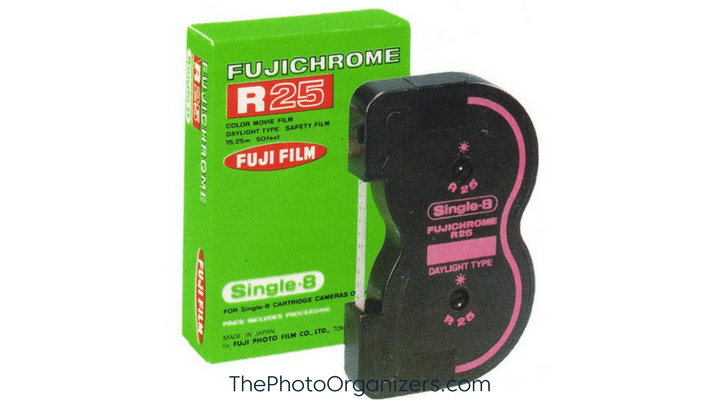
Single8
- Introduced: 1965 by Fujifilm
- Competitor: Kodak Super8
For the Single8 format, unexposed 8mm film is kept in a cartridge. The film is gradually pulled from the cartridge and through a camera when recording. Single8 was more popular in Japan than the U.S., where most people preferred the Super8. This home movie format was discontinued in 2012.

Polavision
- Introduced: 1977 by Polaroid
- Competitors: VHS and Beta tapes
Polavision is another cartridge format. Just like your white-bordered Polaroid photos, this film self-develops using a chemical process. Polavision’s image quality is so poor that it was discontinued in 1979, as VHS and Beta tapes outperformed it. To digitize Polavision, the film needs to be taken out of the cartridge and put onto reels.
Common Tape Formats
Video tape formats use magnetic tape to store audio and video data. Some formats leave the tape out in the open, but the more successful models store the tape inside of cartridges called cassettes. Many cassette formats have variations with different sizes and run times. Media professionals started taping in the 1950s, but videotape did not reach consumers until the ‘60s.
Home video’s popularity started fierce competition between tape makers. The biggest conflict was the videotape format war of the 1970s. JVC’s VHS tape won that war, beating Sony’s Betamax to become the most common video tape format. Here’s more on the VHS and some of the rare formats that surround it.
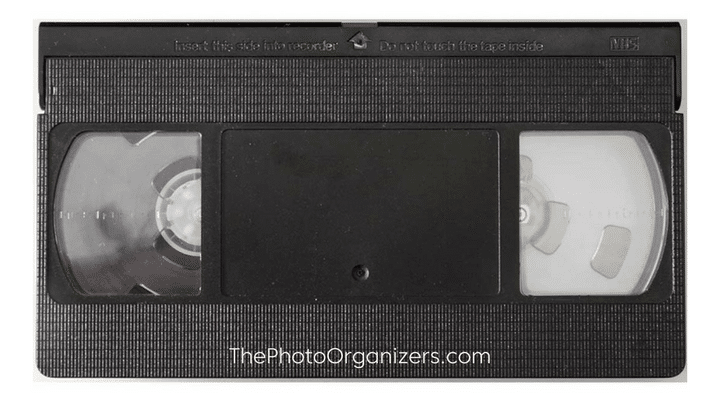
VHS (Video Home System)
- Introduced: 1977 by JVC
- Capacity: About 1500 feet of tape with two to four hours of normal playback time
- Competitor: Sony Betamax tapes
- Variations: S-VHS, ADAT, SVHS-ET (none were successful)
VHS tapes beat Sony Betamax in the format war to become the standard video tape format. The VHS offered longer recordings at a lower price, and this trumped Sony’s claim that Betamax was a better quality product. VHS was also compatible with VCRs, which were popular with consumers and could record television shows. Despite the format’s dominance, VHS cassettes use magnetic tape that deteriorates quickly.
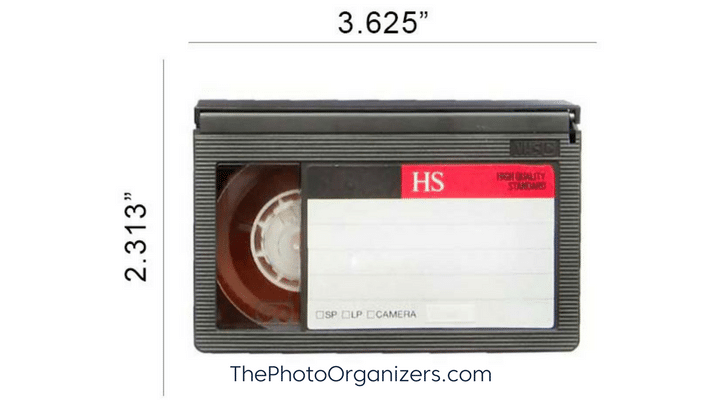
VHS-c
- Introduced: 1982 by Panasonic
- Capacity: About 30 minutes of normal playback time
- Competitor: Sony Video8 tapes
The VHS-c format is just a smaller version of the VHS tape: the ‘c’ stands for ‘compact.’ These tiny cassettes fit portable camcorders, as well as full-sized VHS adaptors for playback in VCRs. The tapes’ quality was outshined by the competing Video8 format, but their compatibility with VCRs made them more popular. They do use the same magnetic tape as standard VHS cassettes, so they’re just as likely to wear out. The tape is vulnerable to mold, and sometimes it comes loose inside of the cassette. Visit us here to read up on our VHS-c conversion process.
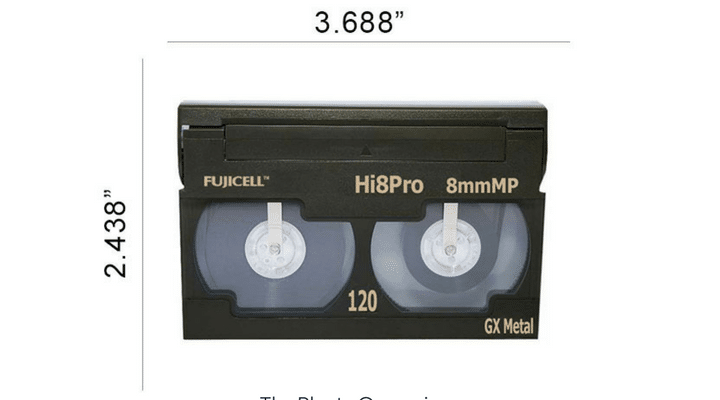
8mm Tapes (Video8, Hi8, Digital8)
- Introduced: 1985 by Sony
- Capacity: 30 to 120 minutes
- Variations: Video8, Hi8, Digital8
- Competitors: Hi8 competed with VHS-c tapes
Sony also started a line of 8mm cassette tapes in the 1980s. The first 8mm tape format was Video8. It was completely analog and later replaced by the Hi8 format. Hi8 tapes offered better quality and longer playback times than their VHS-c competitor.
Digital8 is the latest 8mm tape format. These tapes store digital info that usually transfers to DVD with high quality. Hi8 and Digital8 tapes look identical, but it’s easy to tell them apart because the format is noted on the cassette. 8mm tape formats only have a 15-year shelf life, and 8mm decks are not affordable. However, you can watch these tapes on an 8mm camcorder and even connect that camera to a television.
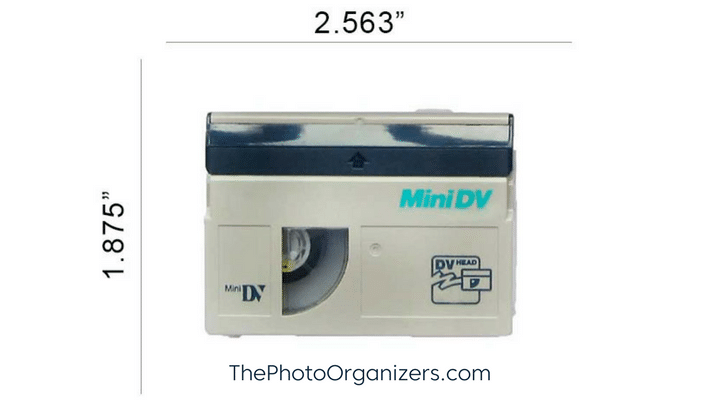
MiniDV
- Introduced: 1995 by a group of manufacturers
- Capacity: about 1 hour of normal playback time
- Variations: DVPRO, DVCAM, and DVCPRO HD
MiniDV was the last video cassette format before memory cards hit stores. MiniDV tapes look just like small VHS tapes. The ‘DV’ in the name stands for ‘digital video,’ which is a format created in the ‘90s by a joint effort between several tape makers.
The tapes’ high quality and small size made them briefly popular. The data stored on these tapes is technically digital, but it’s still stored on tapes and run through the same tape transfer process to convert it to a digital file. MiniDVs are vulnerable to digital corruption, a permanent problem that distorts video and audio recordings.
Uncommon & Rare Tape Video Formats
Beta Tapes (Betamax and Betacam)
- Introduced: 1975 for Sony Betamax, 1982 for Sony Betacam
- Variations: Betamax, Betacam, DigiMax, DigiCam
- Capacity: Varies
Sony put out two main types of Beta tapes. Betamax targeted the average consumer, and the higher quality Betacam series went after media professionals like TV news stations. Playback time varies across different Beta tape versions. Later models fit three to five hours of video, but early Betamax tapes offered just one hour of playback. Consumers preferred the cheaper VHS tapes with more recording time. Beta players are rare today, and decent ones cost almost $1000. Here’s a better way to make the most of those old Beta tapes.
DigiBeta
- Introduced: 1993 by Sony
- Capacity: 40 minutes for S-size, 125 minutes for L-size
- Variations: Digimax and Digicam
- Competitors: DVCAM and DVCPRO
In case you couldn’t tell by the name, DigiBeta tapes are Beta formats that store digital data. They replaced Sony Betacam and Betacam SP during a shift to digital formats in the 1990s. The Digimax and Digicam tapes look very similar, but Digimax cassettes are easy to spot because they’re usually light blue. The larger ‘L-size’ DigiBeta holds more video than the smaller ‘S-size.’
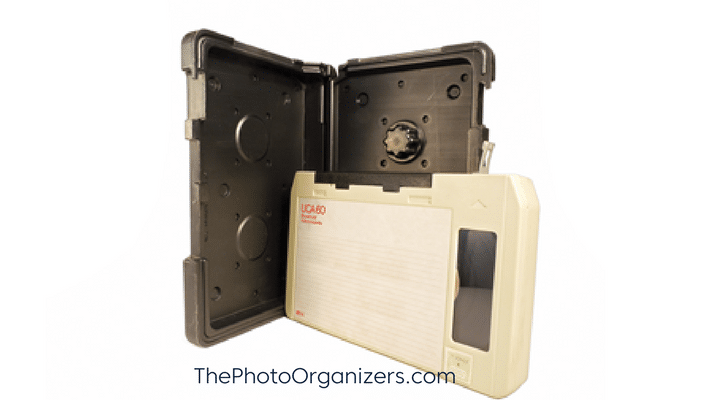
U-matic Tapes
- Introduced: 1971 by Sony
- Variations: U-matic S (for ‘Small’), BVU (for ‘Broadcast Video U-matic’)
- Capacity: 20-30 minutes for U-matic S
The U-matic is a cassette format. These tapes never caught on with consumers because U-matic VCRs were so expensive. But schools and businesses could afford them, and the format became popular with broadcast journalists. U-matic tapes were often damaged by friction when paused inside of a VCR.
Other Obscurities
We try to be thorough, but there’s a smattering of rare formats we still haven’t covered. Some movies are stored on disc formats like LaserDisc. Another one called the V-Cord has a clunky cassette that resembles an 8-track audio recording. Some tapes from outside of the U.S. are recorded in a format called PAL, which is not compatible with American gear that uses the NTSC standard.
Some of these less common formats are extremely hard to preserve, because it’s nearly impossible to find the recording and playback technology that works with them. If you’re curious about an item that wasn’t covered in this guide, you can click here for an exhaustive list of forgotten video formats.

What to Do With the Family Videos and Home Movie Films
Your home movies are a priceless way to travel back in time. Still, older technology keeps getting phased out. Even VCRs were discontinued in 2016, so you’re running out of ways to enjoy these vintage formats. The tapes and chemicals in your reels and cassettes won’t last forever, but your memories can! Follow these tips to preserve and protect your collection for as long as you can.
- Storing: Sunlight and extreme temperatures can actually speed up the deterioration process. Store your video tapes and film in a cool, dry, dark place to stretch their shelf life and prevent mold.
- Handling: Wash your hands before touching the media. Avoid touching film and magnetic tape at all costs. Make sure heavy items have support, and be careful not to place them on top of fragile media.
- Digitizing: As your family memories company, this last step is our favorite. EverPresent can digitize 1000’s and 1000’s of hours of tape and film reel footage each week. The wide range of different video formats makes this task even more exciting, and sometimes trickier. Film reels to digital files are done by scanning each reel, frame by frame. Our video technicians also capture video tapes using commercial-quality tape decks and VCRs to a computer and we never capture straight to DVD – ever. Once your movies are digital, you can enjoy them again on DVDs, USB flash drives, and even cloud storage.
Share & Enjoy Your Rare Videos!
So many rare video formats were born out of competition and innovation. Those forces are still at work, and we may have to add some newer media to the list soon. In the meantime, if you’re still thirsting for home movie knowledge, visit us here for an in-depth look at the different kinds of videos out there.
 Jens Peterson is a Photo Department Coordinator at EverPresent. When he’s not digitizing or conducting quality checks, Jens writes digital content for the company’s marketing team. He brings a passion for media production and communication into both roles.
Jens Peterson is a Photo Department Coordinator at EverPresent. When he’s not digitizing or conducting quality checks, Jens writes digital content for the company’s marketing team. He brings a passion for media production and communication into both roles.
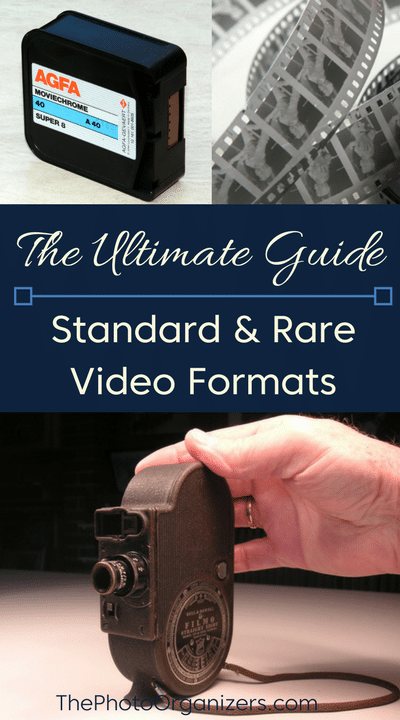

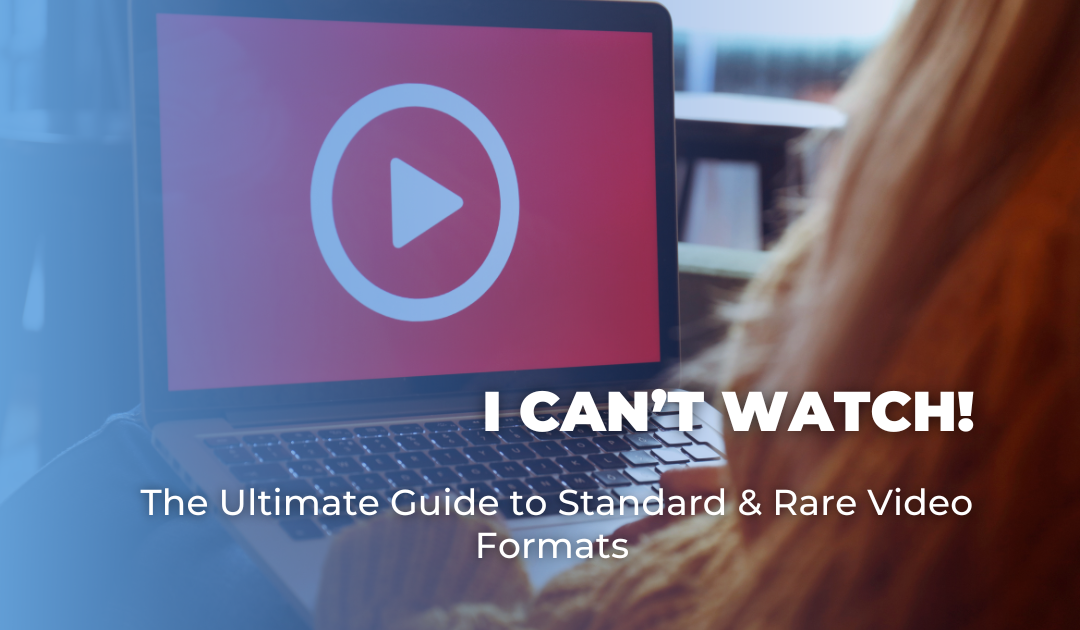

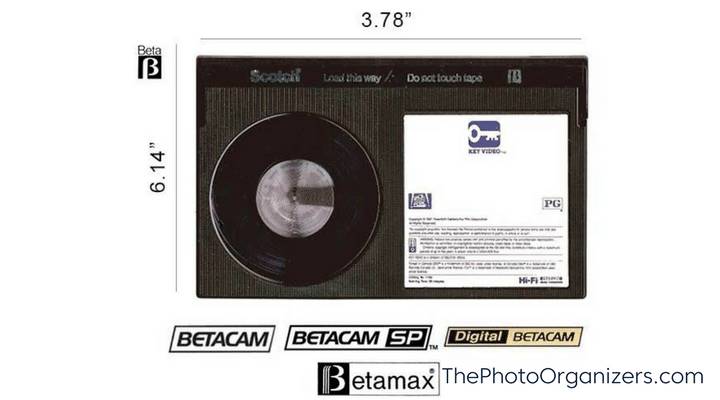
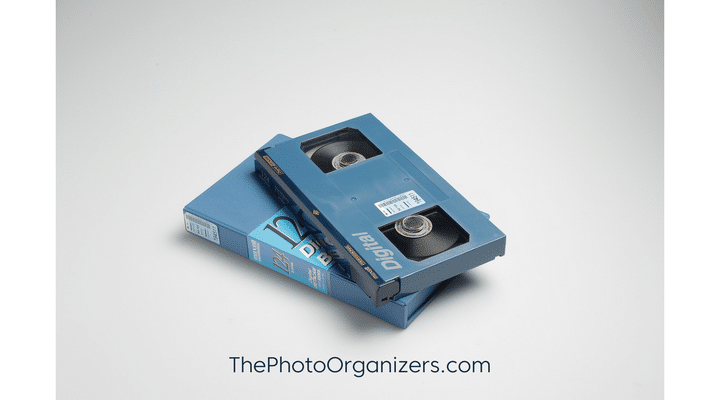
Which movie format (s) are at highest risk of deterioration?